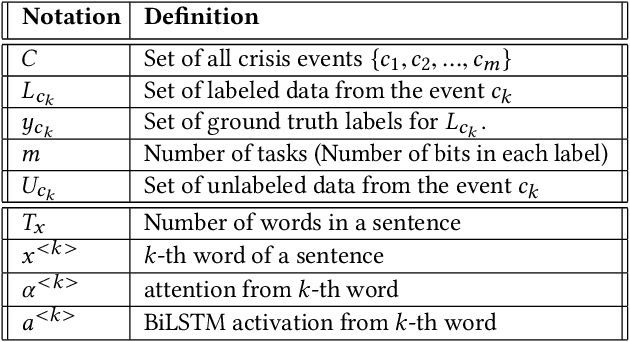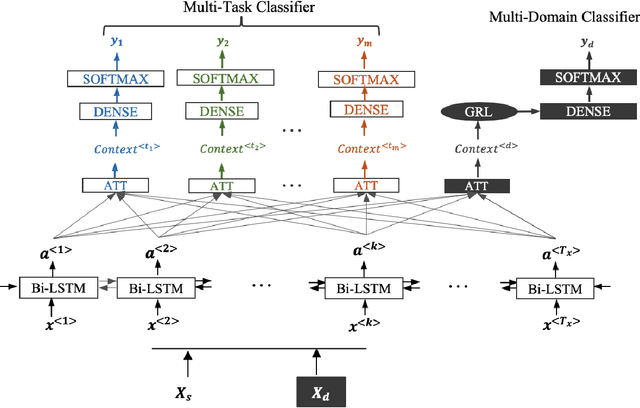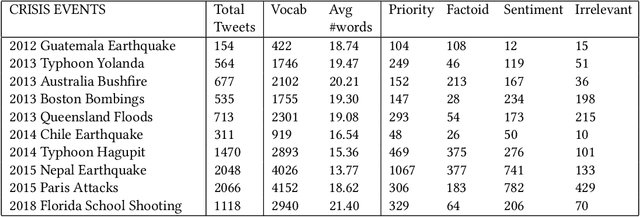Unsupervised and Interpretable Domain Adaptation to Rapidly Filter Social Web Data for Emergency Services
Paper and Code
Mar 04, 2020



During the onset of a disaster event, filtering relevant information from the social web data is challenging due to its sparse availability and practical limitations in labeling datasets of an ongoing crisis. In this paper, we show that unsupervised domain adaptation through multi-task learning can be a useful framework to leverage data from past crisis events, as well as exploit additional web resources for training efficient information filtering models during an ongoing crisis. We present a novel method to classify relevant tweets during an ongoing crisis without seeing any new examples, using the publicly available dataset of TREC incident streams that provides labeled tweets with 4 relevant classes across 10 different crisis events. Additionally, our method addresses a crucial but missing component from current research in web science for crisis data filtering models: interpretability. Specifically, we first identify a standard single-task attention-based neural network architecture and then construct a customized multi-task architecture for the crisis domain: Multi-Task Domain Adversarial Attention Network. This model consists of dedicated attention layers for each task and a domain classifier for gradient reversal. Evaluation of domain adaptation for crisis events is performed by choosing a target event as the test set and training on the rest. Our results show that the multi-task model outperformed its single-task counterpart and also, training with additional web-resources showed further performance boost. Furthermore, we show that the attention layer can be used as a guide to explain the model predictions by showcasing the words in a tweet that are deemed important in the classification process. Our research aims to pave the way towards a fully unsupervised and interpretable domain adaptation of low-resource crisis web data to aid emergency responders quickly and effectively.
 Add to Chrome
Add to Chrome Add to Firefox
Add to Firefox Add to Edge
Add to Edge